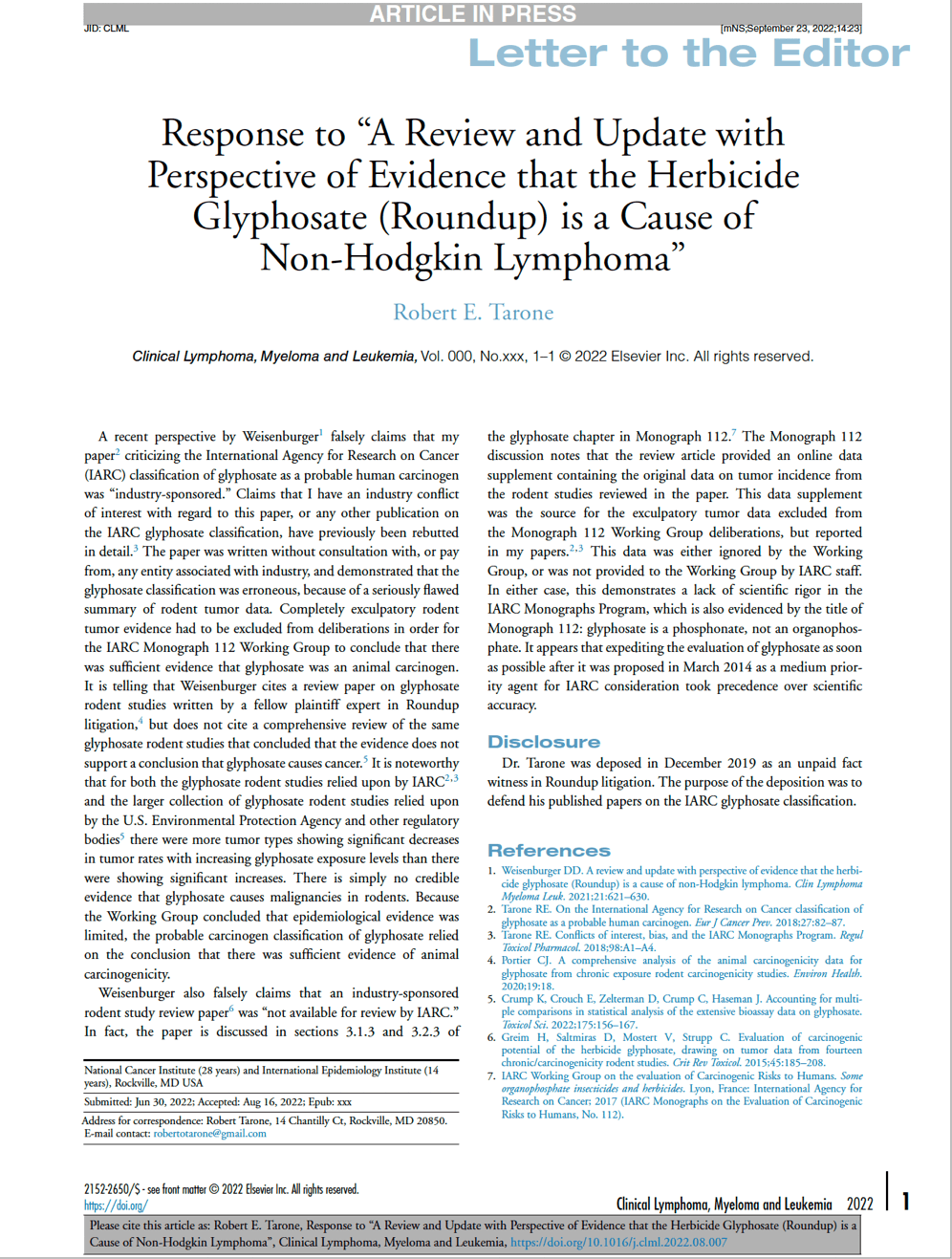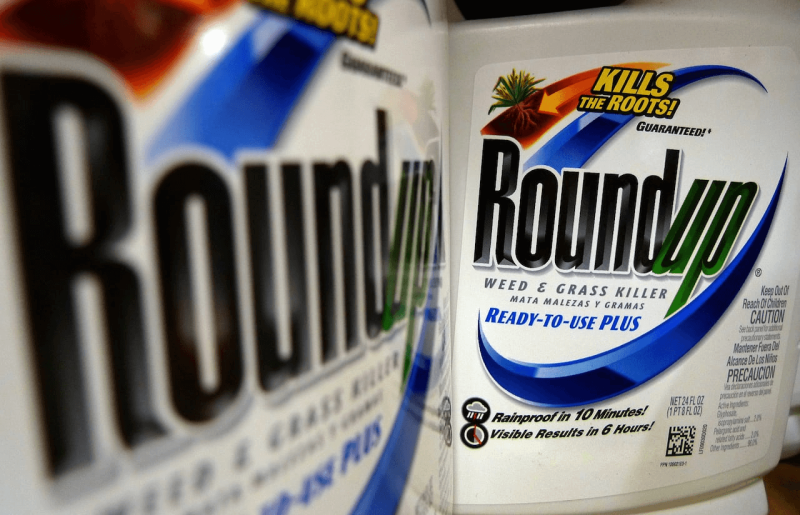Glyphosate, the active ingredient in the weedkiller Roundup, was introduced over forty-five years ago and is the most widely used herbicide in the world. Until 2015, there was little concern about the toxicity or carcinogenicity of glyphosate. This changed in March 2015, when a Working Group of the International Agency for Research on Cancer (IARC) concluded that glyphosate was “probable human carcinogen.” (The full report IARC Monograph 112, Some Organophosphate Insecticides and Herbicides came out almost two years later, in January, 2017). From 2015 on, IARC’s judgment received enormous attention in the media, regulatory circles, activist environmental groups, and, in litigation brought against the chemical’s original producer, Monsanto, and its successor company, Bayer Ag.

Based on the IARC determination, in 2017 the State of California labelled glyphosate a known human carcinogen under Proposition 65.
Starting in 2018, the IARC verdict played a key role in the first cases brought against Monsanto in California. And it continues to play a central role in litigation against glyphosate.
How did this document come to have such enormous influence? The number of people who have actually read the text of IARC’s assessment of glyphosate (Monograph 112) appears to be vanishingly small. It seems that IARC’s judgment carried such cachet that few felt the need to actually read the 91 pages devoted to it and form an independent opinion of the report. Instead, it has been accepted as an article of faith. A partial explanation for IARC’s largely unquestioned authority may be the fact that the agency is loosely affiliated with the World Health Organization.
A less speculative reason is that seventeen supposed international experts in cancer research, who were in the Working Group, agreed with the conclusion. It should give anyone interested in science and the regulatory process pause that basic errors in the IARC document could have been missed by so many experts.
Because the IARC glyphosate determination has been given so much weight and, yet, has received so little critical scrutiny, I am writing this commentary. Although there have been serious critiques of IARC’s glyphosate determination (here, here, here, here, and here), a major problem with the IARC classification has often been overlooked due to the attention devoted to issues, which, while worthy of comment, are less important. These include IARC’s focus on “hazard” instead of “risk” and the Agency’s assessments of other chemicals/substances.
The statistician Robert Tarone has just published a letter in the journal Clinical Lymphoma, Myeloma, and Leukemia responding to a review of the evidence that glyphosate causes non-Hodgkin’s lymphoma. (Tarone worked at the National Cancer Institute for 28 years and later at the International Epidemiology Institute for 14 years). His brief letter, though a bit technical, deserves careful reading.
Before appending the letter, I will highlight the key points and add a few comments of my own:
- IARC based its classification of glyphosate on the animal (that is, rodent) data, because IARC judged the epidemiology (i.e., human data) to be “limited.”
- When all the rodent studies are examined, there are more inverse associations of glyphosate exposure with tumor incidence than there are positive associations. (IARC simply ignored the inverse associations and focused on a few weakly positive associations). There is also evidence that, in the course of editing, positive evidence was strengthened and exculpatory evidence was curtailed.
- It was Christopher Portier, an American statistician, who, in 2014, chaired an advisory board that proposed that IARC assess glyphosate. Portier then served as the “invited expert” on the Working Group that evaluated glyphosate. Within two weeks after the meeting, he went to work as a litigation consultant for two law firms representing plaintiffs against Monsanto.
- The author of the review claims that a paper that included exculpatory rodent data was not available for review by IARC. However, Tarone points out that, in fact, IARC cited the paper in question and noted that it provided an online data supplement containing the original tumor data, but this was either ignored by the Working Group, or not provided to it by the staff. These data were included in Tarone’s own assessment of IARC and glyphosate. Tarone comments that, whatever the explanation for the uncited data, it reflects a “lack of rigor.”
- In closing, Tarone points out another instance of this lack of rigor. The original agenda for Monograph 112, which was posted in July, 2014, only included organophosphate insecticides —not glyphosate. Glyphosate was added later, and its evaluation may have been rushed. In any event, IARC uses the wrong chemical designation for glyphosate. It is a phosphonate, not an organophosphate, as designated in the Monograph title.
- My final point is that it tells us something important that a meticulous examination of the evidence contained in Tarone’s 2018 commentary gets much less attention — even from scientists concerned with this question — than a seriously-flawed report, whose conclusion is at odds with that of every other health and regulatory agency in the world.

Having reviewed some of the crucial issues involved in IARC’s evaluation of glyphosate, we are in a better position to appreciate a stunning sentence that appears early in Tarone’s letter:
Completely exculpatory rodent tumor evidence had to be excluded from deliberations in order for the IARC Monograph 112 Working Group to conclude that there was sufficient evidence that glyphosate was an animal carcinogen.
Geoffrey Kabat is a cancer epidemiologist and author of Getting Risk Right: Understanding the Science of Elusive Health Risks. Find Geoffrey on Twitter @GeoKabat
Editor’s note/correction: Title updated 9-27-22 at 10:10amET































